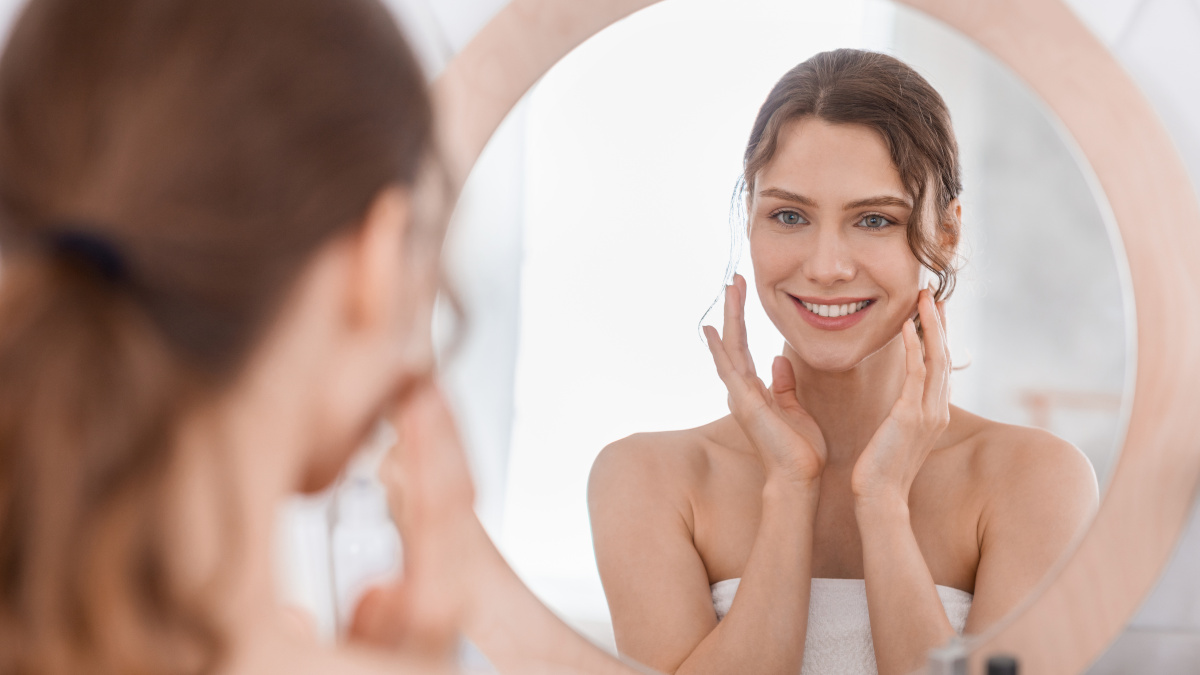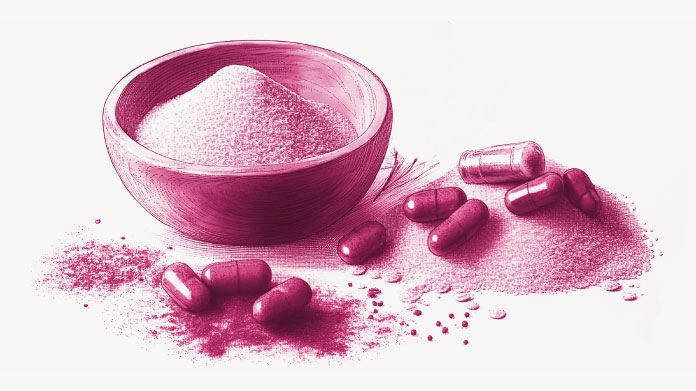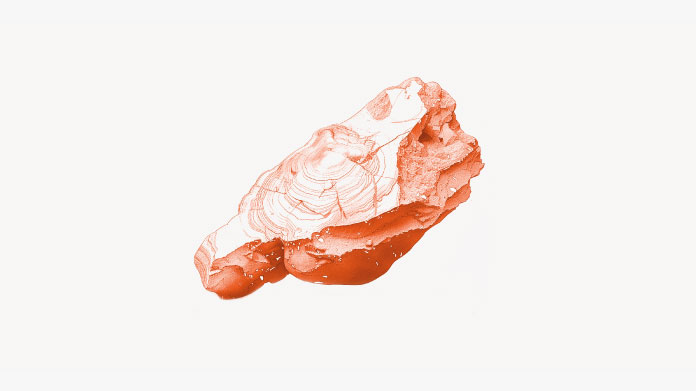Top 10 collagen-rich foods
Which foods have the highest collagen content? Which is the very best source of this key protein for our skin and joints? Answers in our top 10.

Recap: what is collagen?
From the Greek kolla (meaning ‘glue’), collagen is the most abundant protein in mammals, representing 25% of protein mass and 5% of bodyweight (1).
Classed as a structural protein, it is found in the extracellular matrix, the network of macromolecules that surround and provide cohesion to our cells, and in most body tissues (skin, joints, muscles, bones …) (2).
28 different types of collagen have been identified to date (3). The best-known are:
- type I collagen: present in the skin, bones, teeth, tendons and ligaments, this constitutes 90% of total collagen (4);
- type II collagen: this is concentrated primarily in cartilage (5);
- type III collagen: this is found in muscles and blood vessels (6).
Amongst others, collagen affects how youthful we look as it provides softness and firmness to the skin (7). The body produces sufficient levels of collagen up to the age of around 30, after which production of this fibrous protein gradually declines, and visible evidence of the ravages of time start to appear (8).
That’s why it’s important to ensure a good intake of it from the diet … and to memorise the top 10 natural collagen sources!
The 10 most collagen-rich foods
10) Spirulina
Though collagen is found mainly in animal-source products, vegans and vegetarians have a plant source they can turn to in spirulina! This microalgae is well-known for containing high levels of protein, and is notable for its content of glycine, an amino acid which makes up collagen (9).
9) Dairy products
What do milk, yogurt and cheese have in common? They all contain lysine and proline, two amino acids with a direct role in collagen synthesis (10). Try to eat a variety of these foods once or twice a day, for optimum benefits.
8) Salmon
Like meat, all fish contains varying levels of collagen. Salmon, has a slight advantage in that it also contains essential fatty acids and zinc (which helps maintain normal skin and bones). Sardines are another option, with fewer heavy metal residues, the small edible bones of which contain collagen (11).
7) Fish stock
As it’s made from the bones, heads and shells of shellfish, fish stock contains a significant amount of collagen (12). A good choice for flavouring your sauces!
6) Eggs
Collagen, in the form of type I, V and X, is found naturally in egg whites and eggshell membranes, as well as in egg yolks (which also contains sulphur, glycine and proline) (13). So eat the whole egg to benefit from this excellent synergy!
5) Chicken wings
Because they’re peppered with small bones, chicken wings are a mine of collagen (14). The only drawback is they’re eaten in no time at all, having barely any meat on them.
4) Beef
Since muscle fibres are enveloped in collagen, it’s no surprise that beef is a good source (15)! The cuts with the highest levels are unfortunately the least tender: shin, brisket, shoulder, flank…
3) Gelatine
Used for making jellies and panna cotta set, gelatine is obtained by boiling animal connective tissue (usually pork or beef) for a long time. It’s an excellent source of collagen (16), a characteristic not shared by its vegetarian counterpart, agar-agar.
2) Bone marrow
If you like osso buco, you’re in luck, as at its gelatinous centre is bone marrow. Naturally rich in collagen, bone marrow easily takes second place on the collagen podium. It also contains a wide range of minerals: calcium, magnesium, phosphorus...
1) Bone broth
It’s not something we eat very often, but we should! With a base of long-simmered beef or chicken bones, it’s no surprise that bone broth takes the collagen gold medal (17). It also contains hyaluronic acid, another key component of the extracellular matrix, as well as chondroitin and glucosamine, naturally present in connective tissue and cartilage.
Foods that stimulate collagen production
Though they don’t naturally contain collagen itself, some foods have an indirect effect in promoting its production:
- kiwi fruit, citrus fruit and red berries, rich in vitamin C (18);
- almonds and sunflower seeds, sources of vitamin E (19) ;
- vegetables from the Alliaceae family (garlic, onions, leeks…) and cruciferous vegetables (cabbage, watercress, radishes, rocket…) with their sulphur-containing compounds (20) ;
- orange-coloured vegetables (carrots, pumpkin, squash …), the colour evidence of their beta-carotene content (21).
Collagen supplements to boost your intake
As the best sources of collagen are not necessarily the most appetising foods (or those we tend to eat large amounts of), you may wish to consider collagen supplementation to give your intake a significant boost. Supplements vary according to their origin and the type of collagen used.
Obtained from fish scales and bones, marine collagen provides type I, which, as mentioned, is the predominant form in the body. It’s therefore positioned as a safer alternative to bovine collagen (the supplement Marine Collagen uses a patented form obtained via enzymatic hydrolysis, a cutting-edge process which facilitates uptake by tissues) (22-23).
Type II collagen, has a particular affinity with cartilage tissue (playing a role in traction resistance). Indeed, it is still widely studied in the context of rheumatology. But make sure you choose an undenatured form, the only one that stays biologically active.
Some formulations combine several types of collagen (the 100% natural supplement Tendo-Fix contains type I, II, V and X collagen obtained from eggshells and chicken sternums) (26).
Last but not least, there are specific, synergistic beauty supplements that feature collagen for enhanced effects (such as Natural Skin Formula, which combines type II collagen with hyaluronic acid, elastin and ceramides) (27-29).
References
- Wang H. A Review of the Effects of Collagen Treatment in Clinical Studies. Polymers (Basel). 2021 Nov 9;13(22):3868. doi: 10.3390/polym13223868. PMID: 34833168; PMCID: PMC8620403.
- Frantz C, Stewart KM, Weaver VM. The extracellular matrix at a glance. J Cell Sci. 2010 Dec 15;123(Pt 24):4195-200. doi: 10.1242/jcs.023820. PMID: 21123617; PMCID: PMC2995612.
- Ricard-Blum S. The collagen family. Cold Spring Harb Perspect Biol. 2011 Jan 1;3(1):a004978. doi: 10.1101/cshperspect.a004978. PMID: 21421911; PMCID: PMC3003457.
- Naomi R, Ridzuan PM, Bahari H. Current Insights into Collagen Type I. Polymers (Basel). 2021 Aug 9;13(16):2642. doi: 10.3390/polym13162642. PMID: 34451183; PMCID: PMC8399689.
- Gregersen PA, Savarirayan R. Type II Collagen Disorders Overview. 2019 Apr 25. In: Adam MP, Mirzaa GM, Pagon RA, et al., editors. GeneReviews® [Internet]. Seattle (WA): University of Washington, Seattle; 1993-2022. Available from: https://www.ncbi.nlm.nih.gov/books/NBK540447/
- Liu X, Wu H, Byrne M, Krane S, Jaenisch R. Type III collagen is crucial for collagen I fibrillogenesis and for normal cardiovascular development. Proc Natl Acad Sci U S A. 1997 Mar 4;94(5):1852-6. doi: 10.1073/pnas.94.5.1852. PMID: 9050868; PMCID: PMC20006.
- Bolke L, Schlippe G, Gerß J, Voss W. A Collagen Supplement Improves Skin Hydration, Elasticity, Roughness, and Density: Results of a Randomized, Placebo-Controlled, Blind Study. 2019 Oct 17;11(10):2494. doi: 10.3390/nu11102494. PMID: 31627309; PMCID: PMC6835901.
- Varani J, Dame MK, Rittie L, Fligiel SE, Kang S, Fisher GJ, Voorhees JJ. Decreased collagen production in chronologically aged skin: roles of age-dependent alteration in fibroblast function and defective mechanical stimulation. Am J Pathol. 2006 Jun;168(6):1861-8. doi: 10.2353/ajpath.2006.051302. PMID: 16723701; PMCID: PMC1606623.
- Liu P, Lee MK, Choi JW, Choi YH, Nam TJ. Crude protein from spirulina increases the viability of CCD986sk cells via the EGFR/MAPK signaling pathway. Int J Mol Med. 2019 Feb;43(2):771-778. doi: 10.3892/ijmm.2018.4025. Epub 2018 Dec 11. PMID: 30569098; PMCID: PMC6317665.
- Wu G, Bazer FW, Burghardt RC, Johnson GA, Kim SW, Knabe DA, Li P, Li X, McKnight JR, Satterfield MC, Spencer TE. Proline and hydroxyproline metabolism: implications for animal and human nutrition. Amino Acids. 2011 Apr;40(4):1053-63. doi: 10.1007/s00726-010-0715-z. Epub 2010 Aug 10. PMID: 20697752; PMCID: PMC3773366.
- Srinivasan S, Durairaj B. Collagen isolation and characterization from Sardinella longiceps. J Adv Vet Anim Res. 2021 Nov 15;8(4):679-686. doi: 10.5455/javar.2021.h560. PMID: 35106309; PMCID: PMC8757673.
- Jafari H, Lista A, Siekapen MM, Ghaffari-Bohlouli P, Nie L, Alimoradi H, Shavandi A. Fish Collagen: Extraction, Characterization, and Applications for Biomaterials Engineering. Polymers (Basel). 2020 Sep 28;12(10):2230. doi: 10.3390/polym12102230. PMID: 32998331; PMCID: PMC7601392.
- Yamauchi K, Matsumoto Y, Yamauchi K. Egg collagen content is increased by a diet supplemented with wood charcoal powder containing wood vinegar liquid. Br Poult Sci. 2016 Oct;57(5):601-611. doi: 10.1080/00071668.2016.1206193. Epub 2016 Sep 27. PMID: 27376436.
- Pimentel SB, Carvalho HF. The development of fibrocartilage in the elastic tendon of the chicken wing. Anat Embryol (Berl). 2003 May;206(6):487-93. doi: 10.1007/s00429-003-0312-y. Epub 2003 Apr 11. PMID: 12690446.
- Bruce HL, Roy BC. MEAT SCIENCE AND MUSCLE BIOLOGY SYMPOSIUM: BIOLOGICAL INFLUENCERS OF MEAT PALATABILITY: Production factors affecting the contribution of collagen to beef toughness1,2. J Anim Sci. 2019 Apr 29;97(5):2270-2278. doi: 10.1093/jas/skz097. PMID: 30950490; PMCID: PMC6488330.
- Liu D, Nikoo M, Boran G, Zhou P, Regenstein JM. Collagen and gelatin. Annu Rev Food Sci Technol. 2015;6:527-57. doi: 10.1146/annurev-food-031414-111800. Epub 2015 Mar 23. PMID: 25884286.
- Paul C, Leser S, Oesser S. Significant Amounts of Functional Collagen Peptides Can Be Incorporated in the Diet While Maintaining Indispensable Amino Acid Balance. 2019 May 15;11(5):1079. doi: 10.3390/nu11051079. PMID: 31096622; PMCID: PMC6566836.
- Pullar JM, Carr AC, Vissers MCM. The Roles of Vitamin C in Skin Health. 2017 Aug 12;9(8):866. doi: 10.3390/nu9080866. PMID: 28805671; PMCID: PMC5579659.
- Keen MA, Hassan I. Vitamin E in dermatology. Indian Dermatol Online J. 2016 Jul-Aug;7(4):311-5. doi: 10.4103/2229-5178.185494. PMID: 27559512; PMCID: PMC4976416.
- Gupta AK, Nicol K. The use of sulfur in dermatology. J Drugs Dermatol. 2004 Jul-Aug;3(4):427-31. PMID: 15303787.
- Cho S, Lee DH, Won CH, Kim SM, Lee S, Lee MJ, Chung JH. Differential effects of low-dose and high-dose beta-carotene supplementation on the signs of photoaging and type I procollagen gene expression in human skin in vivo. 2010;221(2):160-71. doi: 10.1159/000305548. Epub 2010 Jun 2. PMID: 20516658.
- De Luca C, Mikhal'chik EV, Suprun MV, Papacharalambous M, Truhanov AI, Korkina LG. Skin Antiageing and Systemic Redox Effects of Supplementation with Marine Collagen Peptides and Plant-Derived Antioxidants: A Single-Blind Case-Control Clinical Study. Oxid Med Cell Longev. 2016;2016:4389410. doi: 10.1155/2016/4389410. Epub 2016 Jan 19. PMID: 26904164; PMCID: PMC4745978.
- Bourdon B, Cassé F, Gruchy N, Cambier P, Leclercq S, Oddoux S, Noël A, Lafont JE, Contentin R, Galéra P. Marine Collagen Hydrolysates Promote Collagen Synthesis, Viability and Proliferation While Downregulating the Synthesis of Pro-Catabolic Markers in Human Articular Chondrocytes. Int J Mol Sci. 2021 Apr 1;22(7):3693. doi: 10.3390/ijms22073693. PMID: 33916312; PMCID: PMC8036580.
- Bakilan F, Armagan O, Ozgen M, Tascioglu F, Bolluk O, Alatas O. Effects of Native Type II Collagen Treatment on Knee Osteoarthritis: A Randomized Controlled Trial. Eurasian J Med. 2016 Jun;48(2):95-101. doi: 10.5152/eurasianjmed.2015.15030. PMID: 27551171; PMCID: PMC4970562.
- Gencoglu H, Orhan C, Sahin E, Sahin K. Undenatured Type II Collagen (UC-II) in Joint Health and Disease: A Review on the Current Knowledge of Companion Animals. Animals (Basel). 2020 Apr 17;10(4):697. doi: 10.3390/ani10040697. PMID: 32316397; PMCID: PMC7222752.
- Wong M, Hendrix MJ, von der Mark K, Little C, Stern R. Collagen in the egg shell membranes of the hen. Dev Biol. 1984 Jul;104(1):28-36. doi: 10.1016/0012-1606(84)90033-2. PMID: 6203793.
- Papakonstantinou E, Roth M, Karakiulakis G. Hyaluronic acid: A key molecule in skin aging. 2012 Jul 1;4(3):253-8. doi: 10.4161/derm.21923. PMID: 23467280; PMCID: PMC3583886.
- Coderch L, López O, de la Maza A, Parra JL. Ceramides and skin function. Am J Clin Dermatol. 2003;4(2):107-29. doi: 10.2165/00128071-200304020-00004. PMID: 12553851.
- Baumann L, Bernstein EF, Weiss AS, Bates D, Humphrey S, Silberberg M, Daniels R. Clinical Relevance of Elastin in the Structure and Function of Skin. Aesthet Surg J Open Forum. 2021 May 14;3(3):ojab019. doi: 10.1093/asjof/ojab019. PMID: 34195612; PMCID: PMC8239663.
3 Days
Availability of quality health…
Availability of quality health supplements and it's wide variety is impressive. Ordering is seamless and shipping even during the holidays is well streamlined.
Mohamad Hussein
18 Days
A Product worth waiting for when not…
A Product worth waiting for when not available and then arriving as a surprise!
DOMINIC
19 Days
On time shipping
On time shipping
GEORGE Verne
21 Days
Ordering was easy and the product was…
Ordering was easy and the product was delivered with no problems. Appreciated that I was notified when it would arrive. Thanks!
MascarC
27 Days
Great customer service - responsive …
I ordered from them and my item was unavailable for sometime. I was super happy when they reactivated my order and shipped my item which arrived very quickly. Great customer service.
Ruth Rueter
28 Days
Super fast shipping
Super fast shipping
Donald Borling
31 Days
Reputable companysearch and the number of…
The research and the number of selection of products.
NAKHJAVAN Shervin
44 Days
The Anti Aromatase is a great product
The Anti Aromatase is a great product. You just need to have constant inventory. Recently this product has been out of stock.
GEORGE Verne
45 Days
Great help on chat
Great help on chat. Knowledgeable and friendly.
Jason Argos
49 Days
Customer service was fast and friendly.
Customer service helped to stop the transaction process of the subscription. I appreciated that.
Greenie
49 Days
I order here due to the high quality of…
I order here due to the high quality of the products and the quick delivery of items - thank you
Barbara J
50 Days
SuperSmart's Eye Pressure supplements: highly recommended!
I purchase SuperSmart's Eye Pressure supplements regularly for over 5 years, and gotta say they are truly a wonderful product for my Glaucoma. Highly recommended if you have eye pain from your Glaucoma.
D. Martinez
55 Days
Quick service
Quick service
MONELL
56 Days
Speedy service.
Speedy service.
ROSENTHAL Marvin
59 Days
Clear website- Efficient
Clear website. Excellent search engine and fast delivery!
Mohamad Hussein



